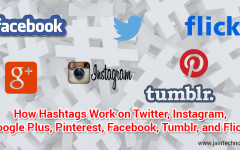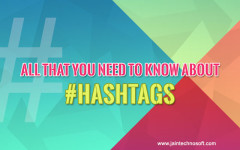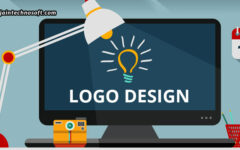![]()
Social media is extremely valuable for promoting your business. It is the key to a website’s popularity. Social media buttons enable your website visitors to easily share your content with their social media connections and networks, which spreads out to new audiences and generates new visitors to your website. This is the reason why social media buttons are almost on every website’s page.
This makes it very important to design and place the buttons appropriately. There must be proper placement, positioning, size and colour of the buttons to help users easily notice them and easily share your content. It seems like a small simple button but, there is a lot of thinking done behind these buttons to make them look the way they are. You should add social media buttons to every piece of content you create, including web pages, blogs, email content, etc.
Social media buttons fall under different categories, some of them being:
- The logo of the website: “f” for Facebook, the bird logo for Twitter, “in” for Linkedin and “P” for Pinterest.
- The sharing buttons: “share” for Facebook and Twitter, “inshare” for Linkedin and “Pin it” for Pinterest.
- The buttons to comment on an activity: “Comment” for Facebook and Pinterest, and “Tweet” for Twitter.
- The follow buttons: “Follow” for Facebook and Twitter, “infollow” for Linkedin and “follow me” for Pinterest.
- The buttons to like an activity: “like” for Facebook and Twitter.
We provide you with some basic things to keep in mind while designing social media buttons. These recommendations will help you create effective media button designs.
Simple shapes and designs
It is important to have a simple and neat design for your buttons. You can give it any basic shape like circle, rectangle, square or triangle. For the logo, it should be very simple and clearly visible to the users in a single colour or maximum of two colours. The button should be easily readable and recognizable. So, keep it simple and sweet. Designers are always tempted to show their designing skills of how they can make an element so fancy and cool. But, instead of impressing the viewers, fancy and colourful buttons might make the viewers fail to interact with them.
Placement and positioning
The most important thing that must be kept in mind is where to place the button. It should be easily located by the viewers to know how to like or share your content. If you notice, you will see that social media buttons usually appear at the upper-left portion of the page. There is a reason behind this. It has been researched that the visitors generally scan a page for the first time in an F-shaped pattern. They start reading from the upper-left corner of the screen horizontally to the right end and back to their starting point, and downwards from there, to know what the page is about. Thus, it is advised to place your buttons from where the visitors start viewing your page to make it easily noticeable.
Sticky buttons
Create a sticky buttons bar that follows the users as and where they navigate through the page. This will keep reminding them that they can share and like your content. This will also help users to do so easily without having to navigate all over to the top or bottom of the page to find the buttons. But, also remember not to make them annoying for the users. Keep the sticky buttons bar an acceptable size with the simplest design.
The more people share your content, the more other internet users will notice and log in to your website and there is a possibility that they turn into regular users. So, make the social media buttons easily accessible and noticeable on all your pages that include shareable content. Getting more popular increases the chances of ranking higher in search engines.



